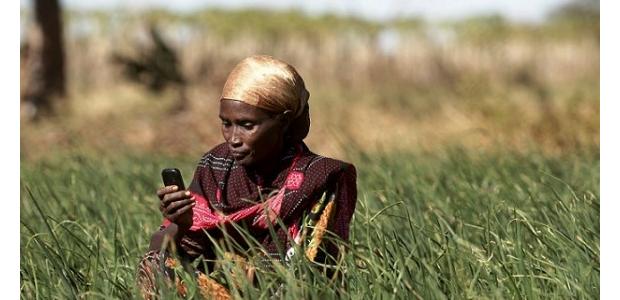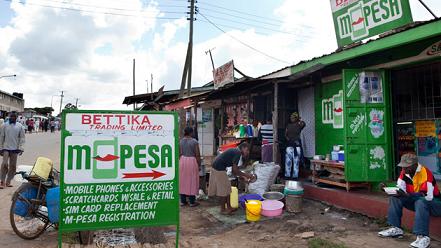
Sixty percent of Kenyans now use their mobile phone for banking transactions and 64 percent of Kenyans send or receive money locally through their mobile phones, according to a study by the Kenya Bankers Association.
Between 2006 and 2009, mobile phone penetration grew by over 47 percent with the penetration at 78 percent when those able to use a phone through a friend, family member or agent are included. Industry projections show that by end of 2014, the total number of mobile subscribers is predicted to rise to 33.2 million. Currently the mobile money market has about 17 million users transferring Sh2 billion daily.
Cash withdrawals and deposits are the main banking transactions undertaken by the respondents, clocking 76 percent and 67 percent respectively. Less than 20 percent of the respondents says that are paying (utility bills, school taxes, goods) through their mobile phones.
According to the study, cash is largely withdrawn at the Automated Teller Machines (ATM) lobbies which stood at 58 percent while mobile operators transact about a fifth of all cash withdrawals.
Forty-eight percent of bank customers are paying their utility bills through their mobile phones, 16 percent are paying for school fees and 13 percent are buying goods for their homes, the study found.
Rural residents use mobile phones more for financial transactions (71 percent) than their counterparts in urban areas (51 percent), with Eastern scoring the highest, and Coast the lowest.
Presenting the findings, KBA Director for Research and Financial Markets Jared Osoro said that „the use of mobile phones for the payments of other bills like school fees at 16 percent , goods for home at 13 percent and office at 8 percent while entertainment also at 8 percent is quite low with less than 20 percent of the respondents paying through their mobile phones.”
The payments are on average paid on monthly basis and amount paid ranges between a mean of Sh1,631 and Sh20,000 with the highest amount paid on mobile phones being school fees which on average stands at Sh19,278.
 The study also shows that money is mainly transferred through mobile phones with 64 percent of the respondents saying that they send and receive money through mobile phones locally. However international money transfers are done through Western Union, Money Gram and NationHela.
The study also shows that money is mainly transferred through mobile phones with 64 percent of the respondents saying that they send and receive money through mobile phones locally. However international money transfers are done through Western Union, Money Gram and NationHela.
„Bankers and mobile service providers together with the regulators should tap on this market. The report indicates that while cost savings is a crucial consideration for mobile banking uptake, security, time saving and convenience are also considered vital,” he revealed. He says that banks should consider ease of use, cost, security, privacy and reliability when adopting mobile banking platforms.
The report also indicates that there is a high demand for mobile banking across non-users of mobile banking that includes Nyanza, Eastern and Western.
According to the study, the interest is likely to be driven and sustained by security from fraud, more locations and physical security.
Central Bank of Kenya data shows that Sh1.117 trillion changed hands through mobile phone money transfers between January and September 2013 as a result of increased interface between commercial banks and cash remittance services of mobile telephone services firms.
A majority of Kenyans (88 percent) indicate that they operate bank accounts with the penetration of banking depending on the socio-economic status of individuals – increasing to as high as 97 percent as one moves up to the socio-economic ladder. Savings accounts (at 45 percent) are more prevalent than current accounts (at 31 percent); with even lower prevalence for both (at 24 percent).
Banks are more accessible in Nairobi and Central Kenya where over 50 percent of customers are able to access a bank branch is 2 kilometres or less. In North Eastern and Coast regions, there are fewer bank branches, thus a majority of bank customers have to travel for 2km to 10 km to access a bank branch.
Speaking at the launch of the Survey, Kenya Bankers Association Chief Executive Officer Habil Olaka said that the growth of the mobile banking platform is steadily changing the way to do business in banks. Technology has greatly advanced playing a major role in improving the standards of service delivery in the financial institution sector.
„Days are long gone when customers would queue in the banking halls waiting to pay their utility bills, school fees or any other financial transactions. They can now do this at their convenience by using their ATM cards or over the Internet from the comfort of their homes,” he added.
„Additionally due to the tremendous growth of the mobile phone industry most financial institutions have ventured into the untapped opportunity and have partnered with mobile phone network providers to offer banking services to their clients. ATM banking is one of the earliest and widely adopted retail banking services in Kenya.”
Kenya is ranked top in the world among countries with the fastest growing mobile money adoption rates and this is the reason financial institutions have shifted from traditional banking.
Each of the mobile phone service providers have a money-transfer service — Safaricom has MPesa; Airtel has Airtel Money; Yu has Yu-Cash; Orange has Orange Money. Banks too have mobile- banking services and they have partnered with service providers to ensure seamless service to their clients.
The Mobile Banking Survey was commissioned by the Kenya Bankers Association’s Centre for Research on Financial Market and Policy and was undertaken in collaboration with Think Business Ltd. Data was collected from 1,258 respondents across the entire country, some banks and mobile service providers.
http://www.capitalfm.co.ke
Banking 4.0 – „how was the experience for you”
„To be honest I think that Sinaia, your conference, is much better then Davos.”
Many more interesting quotes in the video below: